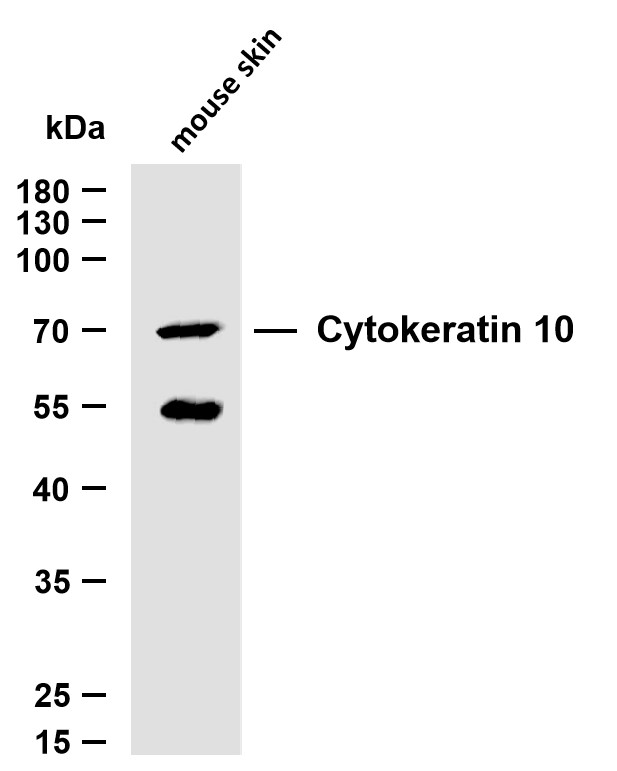Cytokeratin 10 (PTR1360) mouse mAb
- 货号:YM4775
- 应用:WB;ELISA
- 种属:Human; Mouse; Rat;
- 简介:
- >>Estrogen signaling pathway;>>Staphylococcus aureus infection
- 免疫原:
- Synthesized peptide derived from human protein.AA range: 100-200
- 特异性:
- This antibody detects endogenous levels of Cytokeratin 10.
- 组成:
- PBS, 50% glycerol, 0.05% Proclin 300, 0.05%BSA
- 稀释:
- WB 1:500-1000, ELISA: 1:5000-20000.
- 储存:
- -15°C to -25°C/1 year(Do not lower than -25°C)
- 其他名称:
- Keratin, type I cytoskeletal 10 (Cytokeratin-10;CK-10;Keratin-10;K10)
- 背景:
- This gene encodes a member of the type I (acidic) cytokeratin family, which belongs to the superfamily of intermediate filament (IF) proteins. Keratins are heteropolymeric structural proteins which form the intermediate filament. These filaments, along with actin microfilaments and microtubules, compose the cytoskeleton of epithelial cells. Mutations in this gene are associated with epidermolytic hyperkeratosis. This gene is located within a cluster of keratin family members on chromosome 17q21. [provided by RefSeq, Jul 2008],
- 功能:
- disease:Defects in KRT10 are a cause of bullous congenital ichthyosiform erythroderma (BCIE) [MIM:113800]; also known as epidermolytic hyperkeratosis (EHK) or bullous erythroderma ichthyosiformis congenita of Brocq. BCIE is an autosomal dominant skin disorder characterized by widespread blistering and an ichthyotic erythroderma at birth that persist into adulthood. Histologically there is a diffuse epidermolytic degeneration in the lower spinous layer of the epidermis. Within a few weeks from birth, erythroderma and blister formation diminish and hyperkeratoses develop.,disease:Defects in KRT10 are a cause of epidermal nevus epidermolytic hyperkeratotic type [MIM:600648]. Epidermal nevi affect about 1 in 1,000 people. They appear at or shortly after birth as localized lines of epidermal thickening. The extent of skin involvement varies widely.,disease:Defects in KRT10 are a cause of icht
- 细胞定位:
- Cytoplasmic, Membranous
- 组织表达:
- Seen in all suprabasal cell layers including stratum corneum. Expressed on the surface of lung cell lines (PubMed:19627498).

- Whole cell lysates were separated by 10% SDS-PAGE, and the membrane was blotted with anti-Cytokeratin 10 (PTR1360) antibody. The HRP-conjugated Goat anti-Rabbit IgG(H + L) antibody was used to detect the antibody.
Lane 1: mouse skin
Predicted band size: 60kDa
Observed band size: 70kDa
The 55kd of non-specific band is probably endogenous antibody heavy chain of mouse skin tissue.




